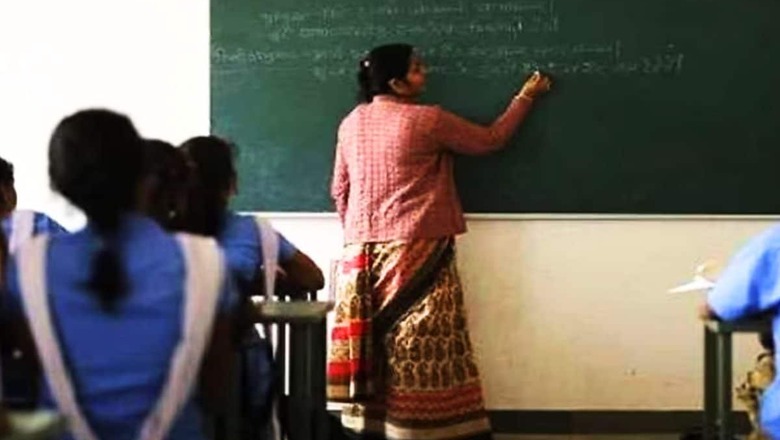
views
More than half of the teens in rural India are enrolled in the humanities stream while those studying science or math at the secondary level are a small section, of which 36.3% are males while females lag behind at a dismal 28.1%. Besides, more than half of the youth in the 14-18 age group struggle with math problems such as division (3-digit by 1-digit), a skill which is expected by class III or IV, according to the Annual Status of Education Report (ASER) survey released on Wednesday.
The ASER-2023 survey report titled ‘Beyond Basics’, led by Pratham Foundation, a non-profit with a focus on school education puts the spotlight on youth aged 14 to 18 years in rural India. The last time this age group was in focus was in 2017. The survey was conducted in 28 districts across 26 states, reaching a total of 34,745 youth in the age group 14-18 years. One rural district was surveyed in each major state, with the exception of Uttar Pradesh and Madhya Pradesh, where two rural districts were surveyed.
According to the report, most of the young people in this age group were enrolled in the Arts/Humanities stream. In class XI or higher, more than half are enrolled in the Arts/Humanities stream (55.7%). Females are less likely to be enrolled in the STEM (Science Technology Engineering and Mathematics) stream (28.1%) than males (36.3%).
“For the first time, ASER also recorded the course stream of students enrolled in classes XI, XII, and in college. In classes XI and XII, 54% are enrolled in arts and humanities, 9.3% in commerce and 33.7% in science. Typically, students who are enrolled in science in classes XI and XII are high performers in class IX so as to have been selected into the science stream, and are therefore more likely to be at grade level,” the report stated.
The report also highlighted that, among these students, 92.8% were able to read a class II level text and 69.7% could do the division problem, which is otherwise a big gap with nearly 25% of those in the 14-18 years not being able to read a class II-level text fluently in their regional languages.
When it comes to foundational literacy and numeracy (FLN) skills, more than half struggle with division (3-digit by 1-digit) problems. Only 43.3% of 14-18-year-olds are able to do such problems correctly. This skill is usually expected in classes III/IV. Besides, 42.6% cannot read sentences in English.
“This further underscores the point that FLN deficits need to be corrected at the time they occur, otherwise learning deficits just accumulate as students are confronted with higher level competencies as they advance through the school system,” the survey report stated.
The new National Education Policy (NEP) 2020 lays emphasis on FLN with a target to achieve universal foundational literacy and numeracy in primary school by 2025.
Overall 86.8% of 14-18 year-olds are enrolled in an educational institution; either school or college. However, the enrolment percentage drops with age. For instance, the proportion of youth who are currently not enrolled in school or college rises with age from 3.9% of 14-year-olds to 10.9% of 16-year-olds and 32.6% of 18-year-olds, the report stressed.
According to the survey, levels of basic learning in classes V-VIII have not seen much improvement in the last decade. As far as basic math is concerned, a comprehensive strategy for learning improvement, starting with basic skills, is urgently needed for the upper primary grades
The ASER 2023 report states that data from the sampled districts is an extension of these trends. 45% of youth in the age group 14-18 have basic arithmetic proficiency. The rest need to “catch up”.
“Low levels of foundational numeracy affect the ability of youth in tackling everyday calculations where they need to apply measurement or use the unitary method in practical situations, or even do simple financial computations such as managing a budget, applying a discount or calculating interest rates or repayment of a loan,” the report stated.
“Catch up” efforts for foundational literacy and numeracy are needed for a significant portion of the 14-18 population, 11 not only for doing better in school but also for everyday needs. Data from ASER 2023 indicates that building foundational literacy and numeracy may be needed for about a fourth of youth in the 14-18 age group, it said.
The report also compares the basic arithmetic skills of students from those recorded in 2017. In 2017, 76.6% of 14-18- 18-year-olds could read a class II level text. In 2023, this number is slightly lower at 73.6%. In arithmetic, in 2017, 39.5% of youth could do a simple (class III/IV level) division problem. In 2023, this proportion is slightly higher at 43.3%.
The survey also highlighted that across enrolment categories, females (76%) do better than males (70.9%) in reading a class II level text in their regional language. In contrast, males do better than their female counterparts in arithmetic and English reading.




















Comments
0 comment